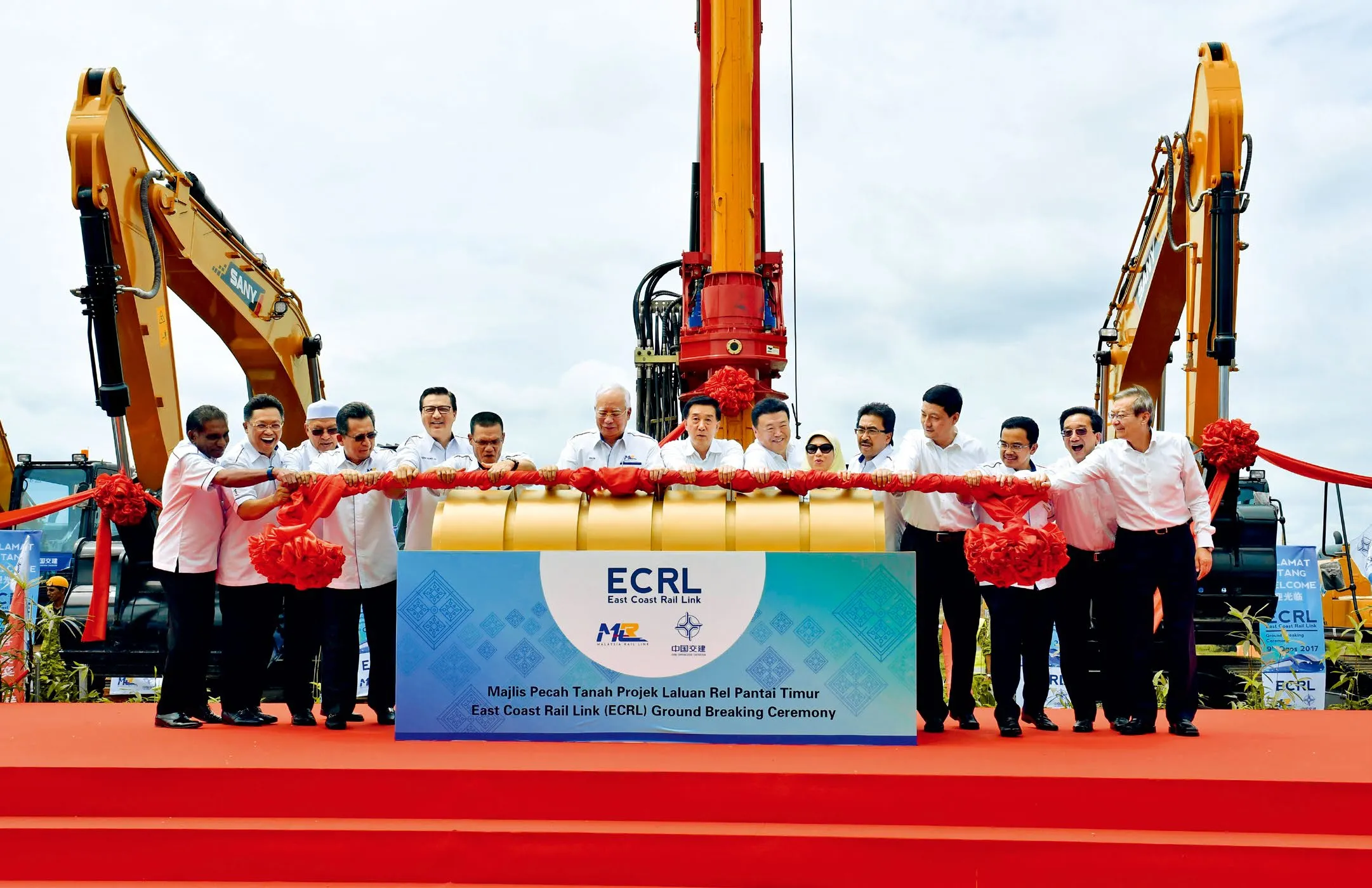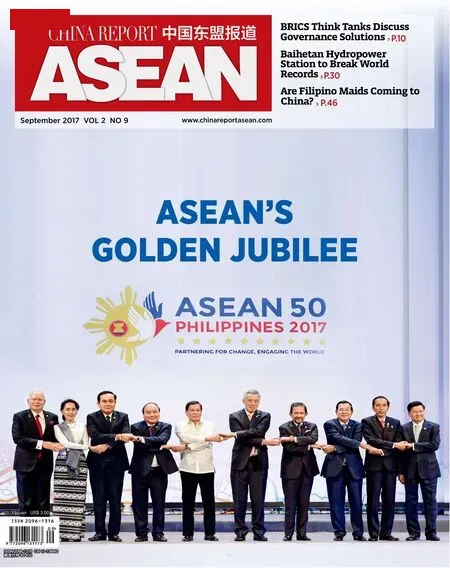Chinese-Built Railway Begins Construction in Malaysia
INFRASTRUCTURE
Chinese-Built Railway Begins Construction in Malaysia

The East Coast Rail Link groundbreaking ceremony was held on Aug. 9 in the Malaysian city of Kuantan.
5.4million
Expected ECRL annual
passengers by the year 2030
$12.83billion
Total cost of the railway
CONSTRUCTION ON A RAILWAYto be built by China was officially launched on Aug. 9 in the Malaysian city of Kuantan.
At a cost of 55 billion ringgit (US$12.83 billion), the 688-kilometer East Coast Rail Link (ECRL) will help upgrade public transportation infrastructure along Malaysia’s eastern coast, said Malaysian Prime Minister Najib Razak when inaugurating a groundbreaking ceremony on the project. He said it will cut travel time from Gombak in suburban Kuala Lumpur to Kota Baru in the northeastern state of Kelantan from seven to four hours.
Chinese State Councilor Wang Yong also attended the ceremony. He praised the ECRL as a “flagship project” jointly built by the two countries under the Belt and Road Initiative, which will boost economic transformation and balanced development of different regions in Malaysia.
China is willing to work closely with the Malaysian side and build the rail link into another landmark project so as to benefit the Malaysian people as soon as possible and help realize regional development and prosperity, Wang added.
The ECRL will be an electric railway line crossing Kelantan, Terengganu, Pahang and Selangor states. It will accommodate passenger trains at a maximum speed of 160 kilometers per hour and freight trains at a maximum speed of 80 kilometers per hour. Construction of the rail link is expected to be completed by 2024.
The project will benefit the 4.4 million population along its route, said Liow Tiong Lai, Malaysia’s minister of transport in a statement. He estimated that the ECRL will serve 5.4 million passengers annually by 2030.The railway is to be built by the China Communications Construction Company. The Export-Import Bank of China financed 85 percent of the railway with soft loans, while the Malaysian government provided the remaining 15 percent by issuing bonds.

